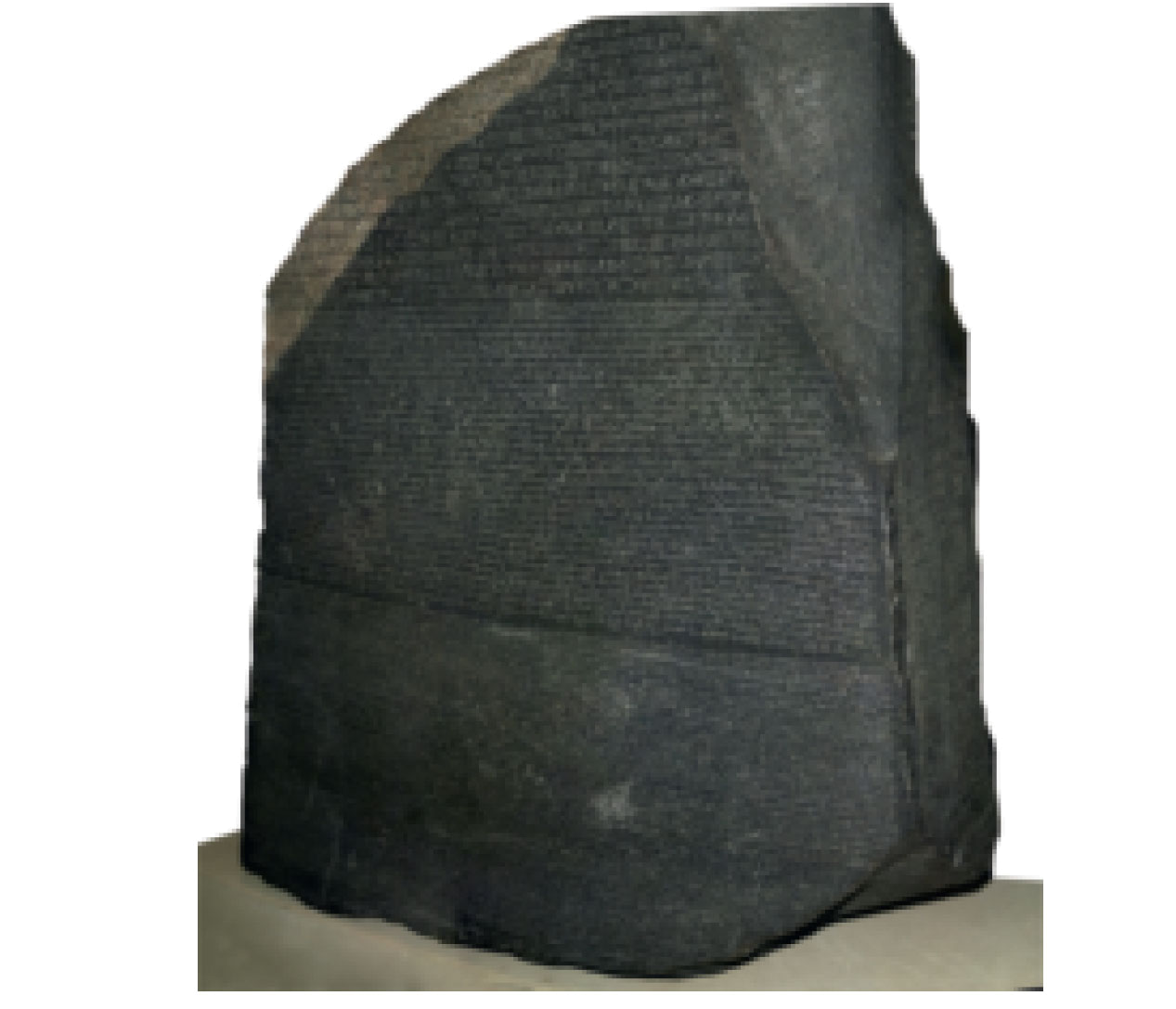

The Rosetta Stone is arguably the single most famous archaeological find for the study of Egyptology. Soldiers in Napoleon’s army discovered it in 1799 near el-Rashid (Rosetta), Egypt, in the remains of an ancient defense wall at Fort Saint Julien. However, the stele’s provenance remains unknown for the city of Rosetta did not exist at the time the stone was inscribed. After Napoleon’s defeat in Egypt, the stone became the property of Great Britain and is now exhibited in the British Museum.
The Rosetta Stone with its trilingual inscription (Greek and two forms of ancient Egyptian writing) became the key to deciphering Egyptian hieroglyphics

A granodiorite stele shaped like a tombstone, it is missing most of its upper portion where an image of a king make an offering to a god would have been. It is 112.3 cm (44.2 in.) high, 75.7 cm (29.8 in.) wide, and 28.4 cm (11.2 in.) thick, weighing approximately 760 kg (1,680 lb.). Inscribed on the front side of the stele is a priestly decree issued at ancient Memphis, affirming the royal cult of the 13-year old Ptolemy V Epiphanes (210–180 BC) on the first anniversary of his coronation in 196 BC. The text is in three scripts (from top to bottom): Egyptian hieroglyphics, like most priestly documents (14 lines), Demotic, an Egyptian cursive writing style used for day-to-day correspondences (32 lines), and ancient Greek, the Ptolemaic official language (54 lines).
While the inscription itself has no relationship to the Bible, it was the key to understanding Egyptian hieroglyphics, opening up a world of Egyptian literature and history. After the English polymath Thomas Young translated its Demotic section by 1814, the French philologist Jean-François Champollion deciphered its hieroglyphs in 1822 and thus laid the foundation to read and comprehend hieroglyphic inscriptions from temples, tombs, stele, coffins, jewelry, ostraca, and papyri, including many artifacts that illuminate the biblical world and corroborate biblical history, such as the Merneptah Stele (“Israel Stele”) that mentions the name “Israel” as early as 1208 BC.

– Parkinson, The Rosetta Stone.